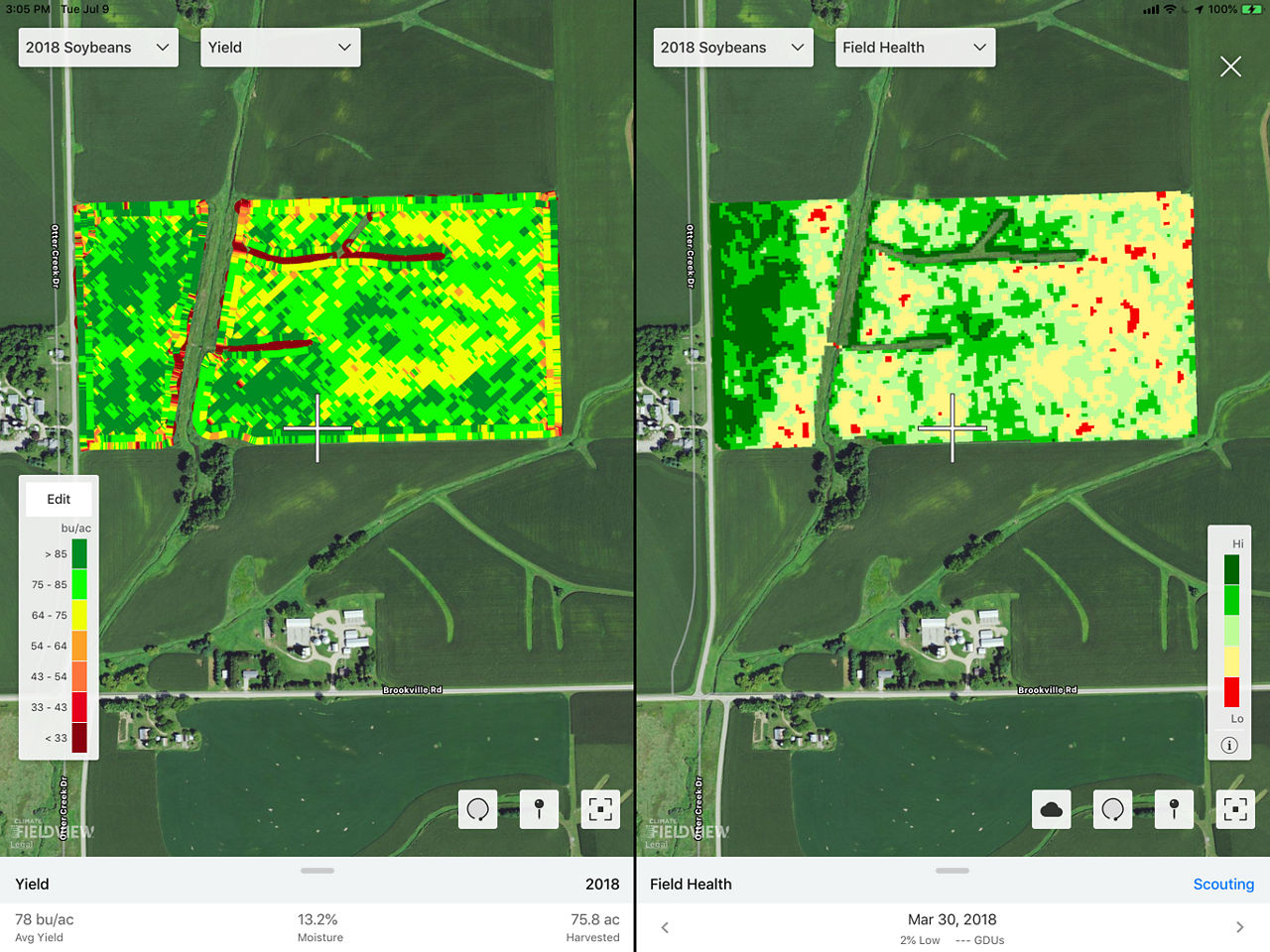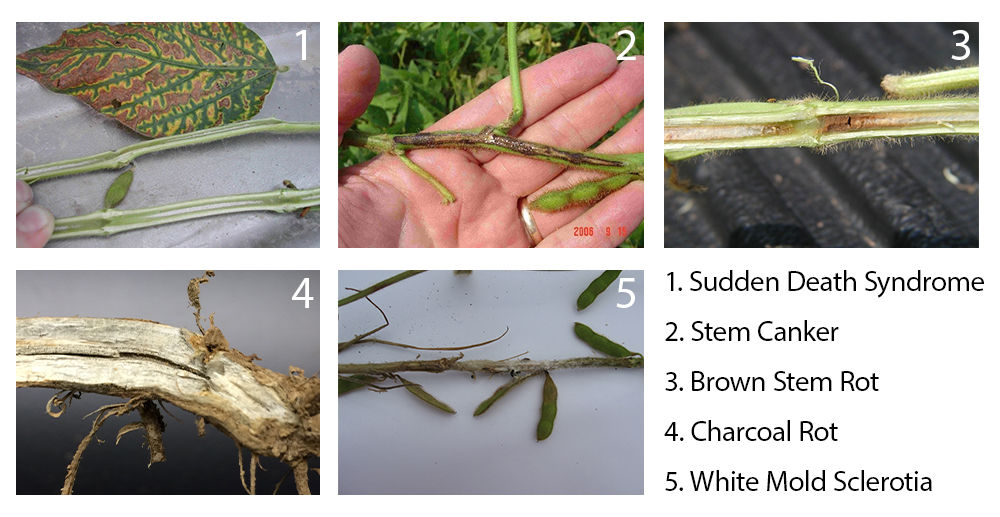Managing Soybean Diseases with Harvest Planning
April 9, 2024
What do I need to know about soybean diseases before harvest?
As soybean harvest approaches, the focus turns to equipment maintenance, yield monitors, and grain bins. But late-season crop scouting is important to accurately diagnose any soybean diseases present. This aids in harvest decisions and in choosing soybean products with the best disease resistance package for your farm in future growing seasons.
Analyzing field health images in the Climate FieldView™ platform is a great way to observe variation in field conditions and provides insight into where to focus scouting activities first (Figure 1). The common late-season root and stem rot diseases of soybean are sudden death syndrome (SDS), soybean cyst nematode (SCN), stem canker, white mold (northern growing regions), brown stem rot (BSR), and charcoal rot (Figure 2). Infections by these pathogens happen early in the growing season; however, symptoms typically develop later and can be exacerbated by growing conditions.

If late-season diseases are identified, what factors should be considered for harvest?
Once late-season diseases appear, it is too late to do much to control them in the current season; however, by knowing the diseases present, management strategies can be employed to prevent or minimize disease in the future.
Soybean diseases, specifically viral diseases, can contribute to symptoms of green stem syndrome in soybean. Green stem syndrome refers to plants that maintain green stems long after pods have reached maturity. Causes for the green stems include viral infections, insect feeding, and certain environmental factors or stresses. Plants with green stem symptoms have reduced yield potential and can create problems at harvest.
For diseases like SDS, stem canker, BSR, and charcoal rot the main management strategies include the use of resistant soybean products and crop rotation. With SDS, infection occurs early in the growing season and is greatest in cool, wet conditions. Along with using genetic resistance, delayed planting, crop rotation, and if possible, reducing the potential for crop stress from growing conditions and SCN, ILEVO® soybean fungicide seed treatment provides another layer of SDS protection. When late-season diseases are present, fields should be harvested in a timely fashion to avoid further yield loss.
In contrast to the diseases listed above where harvesting early is the preferred method, the harvest strategy for white mold is different. The white mold fungus forms sclerotia in and on soybean stems. Sclerotia serve as the primary inoculum for the next soybean crop and can get caught in combines during harvest. These sclerotia can then be spread to non-infested fields. Therefore, non-infested fields should be harvested first, followed by white mold-infested fields. If this is not an option, the combine should be cleaned between fields.

Sources
Sweets, A. 2014. SDS and other late season soybean diseases. Integrated Pest Management. University of Missouri Extension. https://ipm.missouri.edu/cropPest/2014/9/SDS-and-Other-Late-Season-Soybean-Diseases/
Malvick, D. 2018. Green stem syndrome in soybean. University of Minnesota Extension. https://extension.umn.edu/soybean-pest-management/green-stem-syndrome-soybean
Web sources verified 3/1/2024 1311_128791